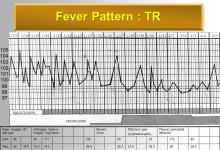Life Expectancy Rises, but People Living Longer with More Illness Save

Lancet has reported that people are living 6.2 years longer, worldside since 1990. Yet, there has been a rise in illness and disability,and a complex mix of fatal and non-fatal ailments leading to a large amount of health loss.
This study from 188 countries examined the Global Burden of Disease study was led by the Institute for Health Metrics and Evaluation (IHME) at the University of Washington.
They found that global life expectancy at birth for both sexes rose by 6.2 years (from 65.3 in 1990 to 71.5 in 2013), while healthy life expectancy (HALE) at birth rose by 5.4 years (from 56.9 in 1990 to 62.3 in 2013).
Health had improved over this period \thanks to marked declines in death and illness caused by HIV/AIDS and malaria in the past decade and significant advances made in addressing communicable, maternal, neonatal, and nutritional disorders.
Life expectancy takes into account not just mortality but also the impact of non-fatal conditions, and summarizes years lived with disability and years lost due to premature mortality. The increase in healthy life expectancy was not as dramatic as the growth of life expectancy, and as a result, people were living more years with illness and disability.
The top 10 countries for highest healthy life expectancy for men and women were (in order): Japan, Singapore, Andorra, Iceland, Cyprus, Israel, France, Italy, South Korea, and Canada.
The countries with the lowest healthy life expectancy were Lesotho, Swaziland, Central African Republic, Guinea-Bissau, Zimbabwe, Mozambique, Afghanistan, Chad, South Sudan, and Zambia.
For most countries, changes in healthy life expectancy for males and females between 1990 and 2013 were significant and positive, but in dozens of countries including Botswana, Belize, and Syria, healthy life expectancy in 2013 was not significantly higher than in 1990. In some of those countries, including South Africa, Paraguay, and Belarus, healthy life expectancy had actually dropped since 1990.
The leading global causes of health loss, as measured by DALYs (disability-adjusted life years), in 2013, were ischaemic heart disease, lower respiratory infections, stroke, low back and neck pain, and road injuries.










If you are a health practitioner, you may Login/Register to comment.
Due to the nature of these comment forums, only health practitioners are allowed to comment at this time.